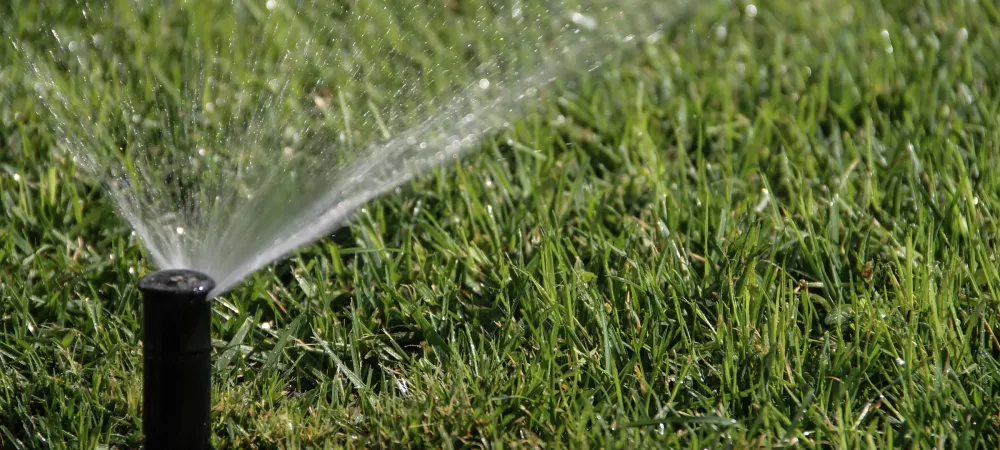
Fall Lawn Care Guide
The shift from summer to fall is the most important transition period for your lawn. Cooler temperatures, increased soil moisture, and reduced weed competition create ideal growing conditions. By focusing on overseeding, fertilization, and winterization, homeowners can repair stressed turf and prepare it for dormancy. Taking the right steps now means less work in spring and a greener, stronger lawn that lasts all season.
Key Takeaways
- Overseeding in fall thickens grass and repairs summer damage.
- Fertilizing in fall strengthens roots for winter survival.
- Aeration improves seed-to-soil contact and nutrient flow.
- Leaf cleanup and mowing adjustments prevent winter disease.
- Winterization protects lawns and equipment until spring..
Why Fall Lawn Care Matters
Fall lawn care refers to the seasonal maintenance practices performed in late summer and autumn to prepare grass for winter dormancy and encourage healthy spring growth. This includes overseeding, fertilization, aeration, watering adjustments, and winterization steps. According to turf specialists, fall is the most effective season for root development because soil temperatures remain warm while air temperatures are cool, creating ideal growing conditions.
Key Benefits of Fall Lawn Care
- Stronger root systems: Fertilization and overseeding in fall encourage deep root growth, making lawns more resilient against cold weather.
- Thicker turf density: Overseeding helps fill bare patches left from summer stress, reducing space for weeds to invade.
- Faster spring recovery: A lawn prepared in fall will green up more quickly and require fewer corrective treatments in early spring.
- Reduced pest and disease pressure: Proper mowing, cleanup, and balanced fertilization limit conditions that allow insects or fungal issues to thrive.
Fall Lawn Care Methods That Work
Overseeding
Overseeding means spreading new grass seed over existing turf to improve density and repair damage. It’s one of the most effective fall tasks because seeds germinate well in cooler soil and take root before winter dormancy. This results in thicker, healthier turf when spring arrives.
- Best for: Lawns with bare patches or thinning areas.
- Pros and cons: Pros include improved density and weed resistance. Cons include the need for consistent watering during germination.
Aeration
Aeration involves pulling plugs of soil from the lawn to reduce compaction and improve air, water, and nutrient movement. Fall is the ideal season to aerate because the soil is softer and recovery time is shorter. Aeration also creates small pockets where grass seed can settle, increasing overseeding success.
- Best for: High-traffic lawns or clay-heavy soils.
- Pros and cons: Benefits seed germination and root growth. Requires equipment rental or professional service.
Winterization Fertilization
Winterization fertilization strengthens turf before dormancy by supplying nutrients directly to the root system. A slow-release fertilizer high in nitrogen is typically recommended in late fall. This process ensures grass stores energy and greens up faster when temperatures rise in spring.
- Best for: All cool-season lawns preparing for dormancy.
- Pros and cons: Builds root reserves for spring, but timing is critical to avoid nutrient loss.
How to Care for Your Lawn in Fall
Step 1: Aerate the soil: Open compacted areas to allow water, oxygen, and seed to penetrate.
Step 2: Overseed thin areas: Spread regionally appropriate grass seed and ensure seed-to-soil contact by raking or topdressing.
Step 3: Fertilize with a fall blend: Use a nitrogen-rich fertilizer to support root growth and store energy for spring.
Step 4: Adjust watering schedules: Keep soil moist for new seeds but reduce frequency as cooler weather arrives.
Step 5: Manage leaves and debris: Mulch, rake, or bag leaves to prevent smothering grass.
Step 6: Perform final mowing and winterization: Cut grass to 2–2.5 inches, drain irrigation systems, and store equipment properly.
Common Mistakes to Avoid
Mistake 1: Overseeding too late: Seeds need time to germinate before frost; starting too late limits establishment.
Mistake 2: Cutting grass too short: Scalping increases stress and makes lawns more vulnerable to winter damage.
Mistake 3: Neglecting leaf cleanup: Piles of leaves can smother grass and promote disease like snow mold.
Frequently Asked Questions
When should I start fall lawn care?
Begin in early fall, ideally late August through September, depending on your region. This allows grass seed to establish before frost.
Do I need to fertilize if I overseed?
Yes, fertilization helps new seedlings establish and strengthens existing turf roots for winter survival.
How often should I water after overseeding?
Water lightly once or twice daily until seeds germinate, then reduce to deeper, less frequent watering as grass establishes.
Professional Lawn Care Services
For homeowners who want expert guidance, the team here at 4-Evergreen Lawn Care provides seasonal lawn care services, including overseeding, fertilization, aeration, and winterization. Contact 4-Evergreen Lawn Care to learn how tailored fall treatments can prepare your lawn for a stronger spring.
